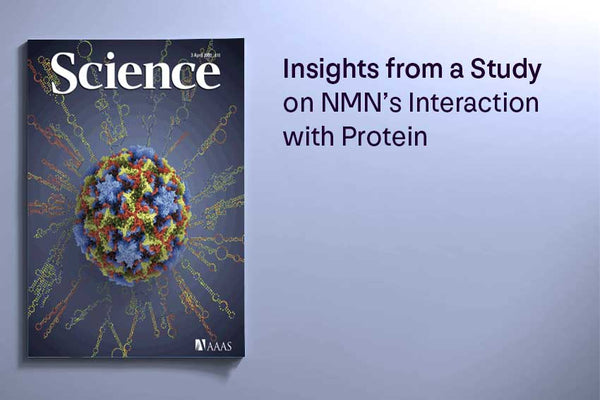
The quest for youth and longevity has been a part of the human narrative for millennia. From Ponce De León's mythical search for the fountain of youth to the ground-breaking research of modern scientists, the drive to understand and combat the process of aging remains a compelling endeavor. Advanced biomolecular research now stands at the vanguard of this immortal crusade. In a study published in "Science" in 2017, researchers led by Dr. David A Sinclair of Harvard Medical School shed light on how (NMN) interacts between certain proteins and key metabolic molecules contribute to the process of aging. The study can be found here.
The research team centered on the pivotal role of NAD+ (oxidized form of nicotinamide adenine dinucleotide), an essential cofactor in various metabolic reactions that regulate energy production, gene expression, DNA repair, and other vital cell functions. Interestingly, NAD+ levels decline with age, leading to reduced metabolic efficiency and increased vulnerability to age-related diseases. One of the intriguing hypotheses drawn from scientific studies is the theory that boosting NAD+ levels could reverse certain aspects of aging and improve healthspan.
Sinclair and his colleagues studied the interaction between NAD+ and a protein called DBC1 (deleted in breast cancer 1). They observed that NAD+ molecules bind to DBC1 and inhibit its interaction with another protein, PARP1 (poly(adenosine diphosphate-ribose) polymerase). PARP1 plays a crucial role in repairing DNA, a process that maintains genome integrity and prevents the onset of age-related maladies like cancer.
Unfortunately, as NAD+ concentrations decrease with age, DBC1 increasingly inhibits PARP1, leading to the accumulation of DNA damage. The scientists found that restoring NAD+ abundance quickly reversed the situation, liberating PARP1 from DBC1's suppression and facilitating DNA repair. Supporting in vitro results, aged mice treated with NMN - a precursor molecule that boosts NAD+ levels - exhibited fewer DNA damage markers and improved liver function.
This study proposes a novel way NAD+ influences protein interactions, signifying its potential in mitigating aging and age-associated maladies. While more research is needed to validate these findings in humans, the study holds promising implications for the development of anti-aging therapies.
Key takeaways:
- The study reveals that NAD+ binding to DBC1 inhibits the latter's interaction with PARP1, a key protein in DNA repair.
- As NAD+ concentrations decrease with age, DBC1 increasingly interacts with and inhibits PARP1, leading to DNA damage accumulation.
- Replenishing NAD+ levels reverses this suppression, facilitating DNA repair.
- Aged mice treated with NMN, a precursor molecule boosting NAD+ levels, showed reduced DNA damage markers and improved liver function.
- The study suggests that NAD+ may be a potential target for anti-aging therapies.
